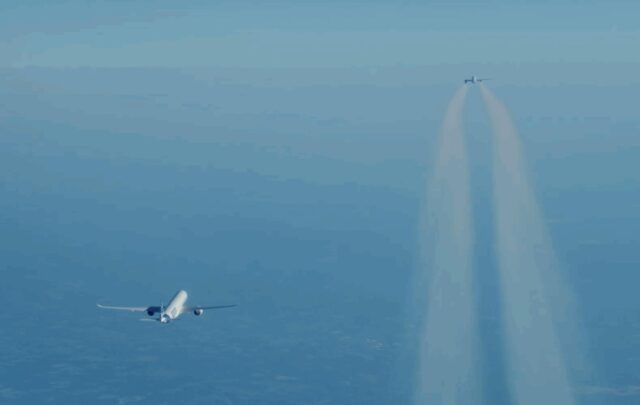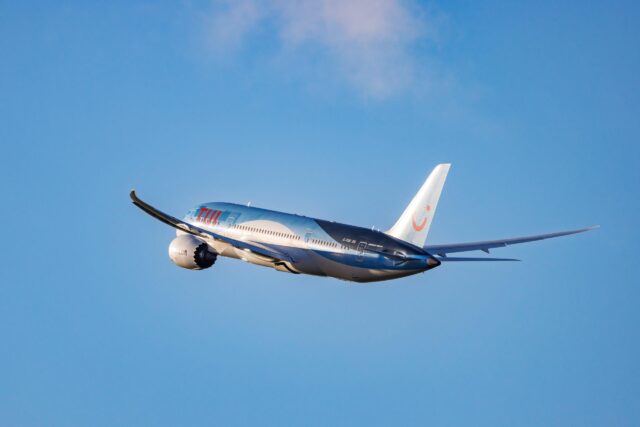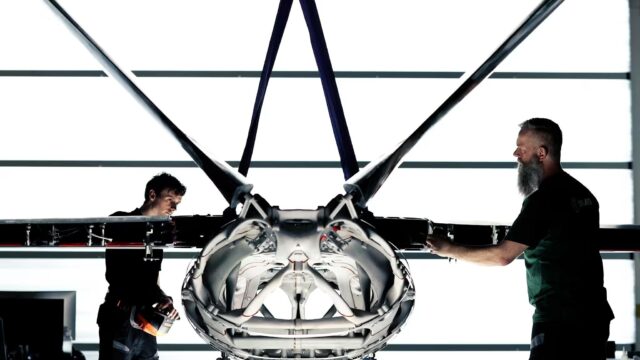Technology takes drone fight to a new level
Increasing use of drones around the UK and the subsequent regulations being developed to help integrate them into national airspace is generally welcomed by commercial and hobbyist users alike. But,…

Increasing use of drones around the UK and the subsequent regulations being developed to help integrate them into national airspace is generally welcomed by commercial and hobbyist users alike. But, as with any new technology, there are challenges, reports Beth Stevenson.
While the majority of drone users are rule-abiding and operate their systems safely, there remains a few who use theirs with malicious intent, or are ignorant to the regulations that keep everyone safe. To this end, the development of counter-unmanned aerial vehicle (C-UAV) technologies has been amplified.
These capabilities can be used to identify and track the system of interest to determine if it is, indeed, a threat, and then counter it in the most effective way. The need to have this type of capability was highlighted by the drone incursions at Gatwick and Heathrow airports in December 2018 – events that grounded a significant number of flights.
One body dedicated to work in this area is the ADS drone platforms and counter-drone (DPAC) special interest group. It is made up of 60 members, the majority of which are working on C-UAV systems.
Electronic or kinetic drone countermeasures
These systems focus mainly on two areas – the detection and tracking of drones; and the methods that could be deployed to counter them, be they electronic or kinetic. Unless C-UAV systems are coordinated by a large prime contractor, their development tends to be by consortiums of smaller companies, combining their individual technological capabilities.
For this reason, ADS acts on behalf of DPAC members, speaking to government and responding to consultations when they are published, explained Brian Hampson, the organisation’s head of capability engagement for national security. “We established DPAC two-and-a-half years ago and it has developed since in response to the growing requirement for these technologies,” he said.
Consortium formed after London airports drone incursions
One consortium that really came to the fore throughout the London airports events was the Anti-UAV Defence System (AUDS), which is collectively developed by Blighter Surveillance Systems, Chess Dynamics and Enterprise Control Systems. Its system was deployed to Gatwick at the end of December 2018 and has remained there ever since to provide wide area perimeter surveillance and drone detection. Mark Radford, chief technical officer and co-founder of Blighter – which provides its A400 air security radar for the system – said the AUDS team continues to work with Gatwick to provide technology and support for the deployed system.
Innovation is ongoing. In September 2019, AUDS unveiled a new vehicle-mounted concept for the system, but this has not yet been deployed.
Detection of small and low-flying drones is evolving
Blighter has also introduced an enhanced version of the system’s A400 radar series, which is able to better detect and report low, slow, and small drones, extracting very small radar reflections from modern plastic drones. It can do this when they are flying close to the ground or near buildings, where clutter reflections are relatively large. Radford noted this is increasingly important as drones become more capable.
“C-UAS solutions are evolving and matching the evolution of threats from increasingly sophisticated unmanned air systems,” Radford said. “With the widespread use of drones for industrial and commercial applications, there continues to be increasing demand for C-UAS solutions to detect malicious, criminal and security threats.”
Radford pointed out that the major technology trend in C-UAV systems is a migration towards multi-sensor fusion with intelligent processes, which can extract and identify the threats and reject other real-world targets and false alarms.
“We are continually developing the capabilities of our electronic-scanning radar to extend the range and accuracy of detection to meet the evolving threat environment. We shall be launching a number of new radar products with enhanced capabilities in the coming months,” he added.
Leonardo carrying out C-UAV research for RAF
Leonardo, meanwhile, has been selected by the Royal Air Force to carry out C-UAV research under a new three-year programme, reviving work the company had previously carried out for the service in this domain. This programme is designed to explore the existing and future requirements for C-UAV technologies, helping the RAF shape its emerging response strategy for the threat of malicious drones.
“We’re making good progress with the RAF counter-drone research programme, which commenced earlier this year,” said Leonardo, C-UAS sales and marketing manager Andy Roberts.
“Right now we’re delivering the baseline counter drone systems to the RAF. Later this year, likely following the lifting of coronavirus-related restrictions, we’ll be moving on to the evaluation stage, looking at a range of technologies that could be combined to form a future RAF counter-drone capability.”
Programme must determine future requirements
However, Roberts stressed that this programme is not just about being reactive to existing threats, but is also trying to determine future requirements for a C-UAV system.
“The research programme will inform how the RAF will keep pace with technology over time,” he said. “Drone technology is evolving quickly and our defences will need to continue to develop in order to stay relevant.”
Meanwhile, the defence and security accelerator (DASA) – the Ministry of Defence’s innovation hub – is running a programme on behalf of the Defence Science and Technology Laboratory (Dstl), which is carrying out ongoing research into C-UAV initiatives. When the programme – countering drones, finding and neutralising small UAS threats – was introduced in April 2019, it received more than 90 bids, which led to the government doubling the funding from £1 million to £2 million when the contracts were awarded for phase one in November.
The project awards, worth £100,000 each, went to: Airspeed Electronics; Animal Dynamics; Autonomous Devices; BAE Systems Applied Intelligence (two awards); Cubica Technology; MBDA UK; Northrop Grumman; Northumbria University; PA Consulting; Plextek Services (two awards); QinetiQ (two awards); Riskaware; Thales UK; University College London; and another undisclosed bid.
Subscribe to the FINN weekly newsletter
















